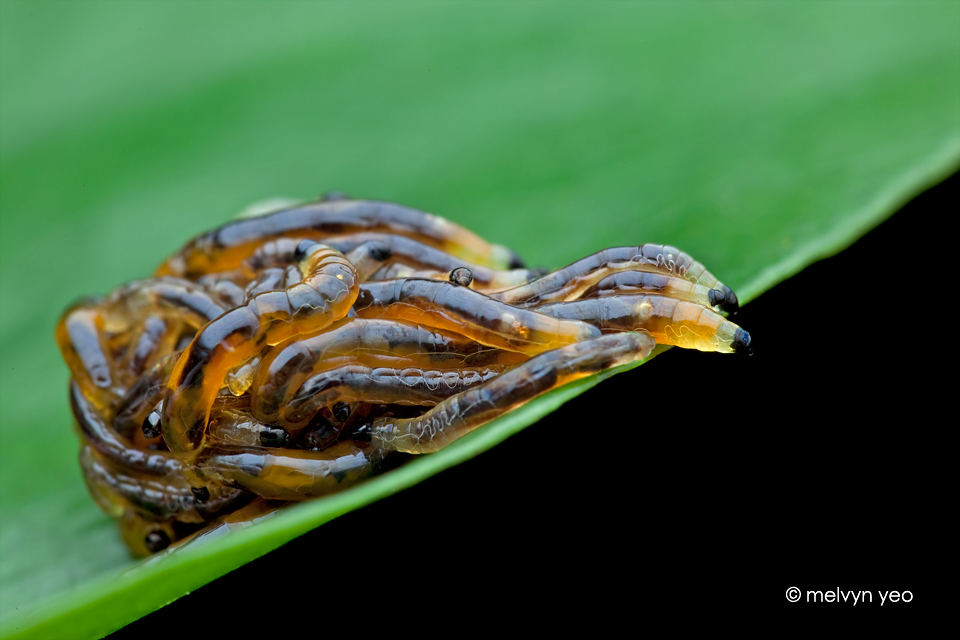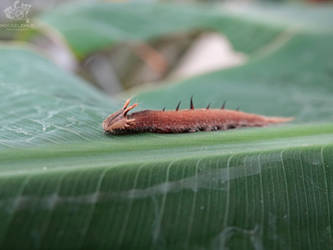ShopDreamUp AI ArtDreamUp
Deviation Actions
Suggested Deviants
Suggested Collections
Description
These larvae move together as one.... see this video!! (Not safe for those who are afraid of worms) www.youtube.com/watch?v=_WcdLL…
Taken at night in Singapore forest.
Quote from en.wikipedia.org/wiki/Sciarida…
The Sciaridae are a family of flies, commonly known as dark-winged fungus gnats. Commonly found in moist environments, they are known to be a pest of mushroom farms and are commonly found in household plant pots. This is one of the least studied of the large Diptera families, probably due to the small size of these insects and the difficulty in specific identification. Currently, around 1700 species are described, but an estimated 20,000 species are estimated to be awaiting discovery, mainly in the tropics. More than 600 species are known from Europe.
These gnats are small, from one to at the very most seven millimetres long. They have slender, darkly colored bodies and dark wings. However, the females of several species are wingless. Their long legs and antennae with eight to 16 segments are typical of many gnats.
The life cycle of only a few species has been studied in any detail, mainly those which are pests of commercially grown mushrooms. Sciarid larvae are mainly found in soil and plant litter, where they seem to feed mainly on fungi and animal faeces. Also, some species mine in plant parts above and below the earth. The larvae play an important role in turning forest leaf litter into soil.
Adult females lay about 200 transparent eggs (each about 1 mm long) into moist soil. After about one week, the larvae hatch. About 90% of the larvae are female. Up to 2,500 per m² can be found. Several species, especially Sciara militaris, can be found to migrate in processions of up to 10 m, containing thousands of individuals. These processions occur from May to June in central Europe. The larvae there pupate from July to August.
The adults with their characteristic dancing flight do not bite. They only ingest liquids and live only long enough to mate and produce eggs. They die after about five days.
Taken at night in Singapore forest.
Quote from en.wikipedia.org/wiki/Sciarida…
The Sciaridae are a family of flies, commonly known as dark-winged fungus gnats. Commonly found in moist environments, they are known to be a pest of mushroom farms and are commonly found in household plant pots. This is one of the least studied of the large Diptera families, probably due to the small size of these insects and the difficulty in specific identification. Currently, around 1700 species are described, but an estimated 20,000 species are estimated to be awaiting discovery, mainly in the tropics. More than 600 species are known from Europe.
These gnats are small, from one to at the very most seven millimetres long. They have slender, darkly colored bodies and dark wings. However, the females of several species are wingless. Their long legs and antennae with eight to 16 segments are typical of many gnats.
The life cycle of only a few species has been studied in any detail, mainly those which are pests of commercially grown mushrooms. Sciarid larvae are mainly found in soil and plant litter, where they seem to feed mainly on fungi and animal faeces. Also, some species mine in plant parts above and below the earth. The larvae play an important role in turning forest leaf litter into soil.
Adult females lay about 200 transparent eggs (each about 1 mm long) into moist soil. After about one week, the larvae hatch. About 90% of the larvae are female. Up to 2,500 per m² can be found. Several species, especially Sciara militaris, can be found to migrate in processions of up to 10 m, containing thousands of individuals. These processions occur from May to June in central Europe. The larvae there pupate from July to August.
The adults with their characteristic dancing flight do not bite. They only ingest liquids and live only long enough to mate and produce eggs. They die after about five days.
Image size
960x640px 320.9 KB
Make
Canon
Model
Canon EOS 5D Mark II
Shutter Speed
1/160 second
Aperture
F/16.0
Focal Length
100 mm
ISO Speed
200
Date Taken
Aug 2, 2014, 1:30:45 AM
Sensor Size
6mm
© 2014 - 2024 melvynyeo
Comments15
Join the community to add your comment. Already a deviant? Log In
They're so intriguing. I want to get into a bath full of them.
































![Sport-worm's journey [inch worm?]](https://images-wixmp-ed30a86b8c4ca887773594c2.wixmp.com/f/c53e7f9a-f10e-484a-b434-a34c52ded0e8/db6lzyy-e4d5d49f-97e4-477a-a64a-5e2b15269d89.jpg/v1/crop/w_184)


